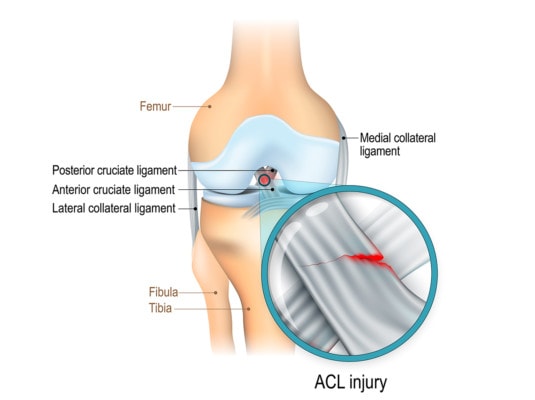Huge ACL Surgery Cost Burden May Be Reduced by Injections Over Surgery…
The average ACL surgery cost in the U.S. is about $10-12,000. However, is there a cheaper alternative that uses an injection of your own stem cells without the need for surgery? This is one of the many before and after MRI cases we’ve amassed showing a healing blown ACL after a very precise stem cell injection without surgery.

Designua/Shutterstock
The ACL ligament is a strong stabilizer that lives in the middle of the knee and prevents the bottom tibia knee bone from sliding forward on the tibia. It also stabilizes rotation or pivoting movements. Tears in the ligament often happen in sports and result in knee instability, swelling, and wear and tear arthritis. Many athletes opt for surgical reconstruction, but that method has it’s downsides including poor position sense, an artificial ligament position in the joint, and frequent re-tears. In addition, newer research has questioned whether athletes can return to sports any quicker or more often with a reconstructed ACL ligament versus no surgery.
Can we prompt an ACL to heal without surgery? We’ve seen torn ACL ligaments move toward healing after a very precise injection of the patient’s own stem cells. We’ve posted many MRIs and have submitted a study for publication on the topic. We also have pulled the trigger on a controlled trial where the patient has no out of pocket cost for this groundbreaking ACL stem cell procedure as long as they agree to be randomized to wait or get the procedure (cross-over design). This morning I’ll highlight one of the patients from that trial.
This study candidate is a 32-year-old female who on July 17, 2014 while playing soccer went to change directions and felt her right knee pop. She had immediate severe pain and noticeable swelling. When she came to see us a few weeks later, her pain was mostly in the outside of the knee and was initially an 8-9/10 on a pain scale. By the time she was evaluated her worse pain was a 7/10. She had tried physical therapy and anti-inflammatory pills and was unable to return to sports or running. Her MRI from after the injury above shows a blown-out and shredded ACL (left along arrows). In late July of 2014, she was admitted into our study and was randomized to get stem cells injected into her knee. Her 5-month follow-up film is above on the right. Note that the ACL (along the yellow arrows) now has a tight band-like appearance (more normal). Her previous 7/10 pain score was now down to a 2-3/10 and she reported not having any pain most of the time, which she interprets as a great improvement. By November she reported running for the past two weeks at approximately two to three miles on a treadmill or running outdoors, running up to seven and a half to eight-minute mile pace and having no soreness afterward.
The upshot? While this patient’s ACL may need a little more work, she’s doing well and avoided big surgery. We’ve seen many examples of before and after MRIs showing improvement in ACLs and patient function after an ultraprecise stem cell injection protocol.

NOTE: This blog post provides general information to help the reader better understand regenerative medicine, musculoskeletal health, and related subjects. All content provided in this blog, website, or any linked materials, including text, graphics, images, patient profiles, outcomes, and information, are not intended and should not be considered or used as a substitute for medical advice, diagnosis, or treatment. Please always consult with a professional and certified healthcare provider to discuss if a treatment is right for you.
